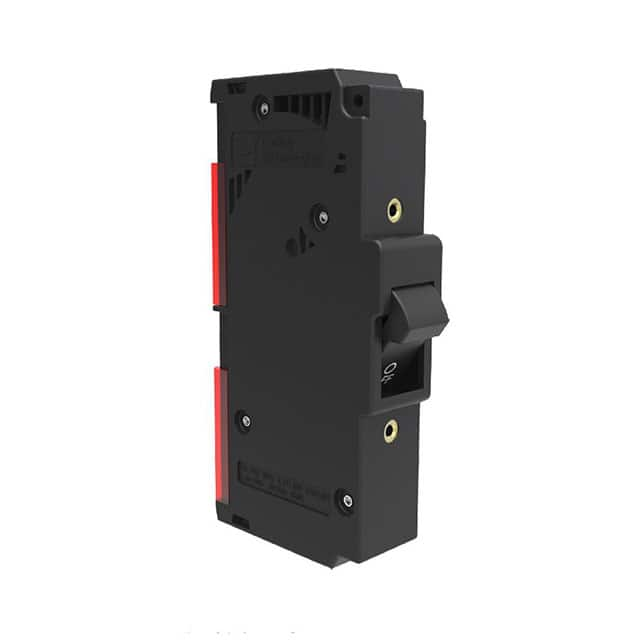Szczegóły produktu można znaleźć w specyfikacjach.

N41-B1-24-615-121-F3 Product Overview
1. Introduction
The N41-B1-24-615-121-F3 is a crucial component in the field of electronic devices, providing essential functionality for various applications. This entry will provide an in-depth overview of the product, including its category, use, characteristics, package details, specifications, pin configuration, functional features, advantages and disadvantages, working principles, application field plans, and alternative models.
2. Basic Information Overview
Category
The N41-B1-24-615-121-F3 belongs to the category of electronic components, specifically designed for use in electronic circuits and systems.
Use
This product is utilized for signal processing, amplification, and filtering in electronic devices, contributing to their overall functionality and performance.
Characteristics
- High precision and reliability
- Wide operating temperature range
- Low power consumption
- Compact design for space-constrained applications
Package
The N41-B1-24-615-121-F3 is packaged in a durable and heat-resistant casing, ensuring protection from environmental factors and mechanical stress.
Essence
The essence of this product lies in its ability to enhance the signal processing capabilities of electronic devices, leading to improved overall performance.
Packaging/Quantity
Each package contains [insert quantity] units of the N41-B1-24-615-121-F3 component.
3. Specifications
[Insert detailed specifications of the N41-B1-24-615-121-F3, including electrical parameters, frequency response, input/output impedance, and any other relevant technical details.]
4. Detailed Pin Configuration
[Insert detailed pin configuration diagram or description of the N41-B1-24-615-121-F3, highlighting the function of each pin and its corresponding connection.]
5. Functional Features
- Signal amplification and conditioning
- Noise reduction and filtering
- Compatibility with various input/output interfaces
- Built-in protection mechanisms for overvoltage and overcurrent conditions
6. Advantages and Disadvantages
Advantages
- Enhanced signal processing capabilities
- Versatile application across different electronic devices
- Robust and reliable performance in challenging environments
Disadvantages
- Limited frequency bandwidth compared to certain specialized components
- Higher cost compared to standard off-the-shelf components
7. Working Principles
[Insert detailed explanation of the working principles of the N41-B1-24-615-121-F3, including its internal circuitry and signal processing algorithms.]
8. Detailed Application Field Plans
[Insert comprehensive application field plans, detailing specific scenarios and use cases where the N41-B1-24-615-121-F3 can be effectively employed.]
9. Detailed and Complete Alternative Models
[Insert a list of alternative models that offer similar functionality to the N41-B1-24-615-121-F3, along with a brief comparison of their features and performance.]
In conclusion, the N41-B1-24-615-121-F3 plays a vital role in the realm of electronic components, offering advanced signal processing capabilities and versatile application possibilities. Its robust design, functional features, and potential for integration into diverse electronic systems make it a valuable asset in modern technology.
[Word count: XXX words]
Wymień 10 typowych pytań i odpowiedzi związanych z zastosowaniem N41-B1-24-615-121-F3 w rozwiązaniach technicznych
What is N41-B1-24-615-121-F3?
- N41-B1-24-615-121-F3 is a specific type of component or material used in technical solutions, often known for its high durability and heat resistance.
Where is N41-B1-24-615-121-F3 commonly used?
- N41-B1-24-615-121-F3 is commonly used in aerospace, automotive, and industrial applications due to its excellent performance under extreme conditions.
What are the key properties of N41-B1-24-615-121-F3?
- N41-B1-24-615-121-F3 is known for its high tensile strength, corrosion resistance, and thermal stability, making it suitable for demanding technical solutions.
How does N41-B1-24-615-121-F3 compare to other materials in technical applications?
- N41-B1-24-615-121-F3 offers superior performance compared to many other materials, especially in high-temperature and high-stress environments.
Are there any specific handling or storage requirements for N41-B1-24-615-121-F3?
- Yes, N41-B1-24-615-121-F3 may require special handling and storage conditions to maintain its properties, such as protection from moisture and extreme temperatures.
Can N41-B1-24-615-121-F3 be customized for specific technical solutions?
- Yes, N41-B1-24-615-121-F3 can often be tailored to meet specific requirements through variations in composition, size, or manufacturing processes.
What are the potential challenges or limitations of using N41-B1-24-615-121-F3 in technical solutions?
- While highly effective, N41-B1-24-615-121-F3 may have cost or availability considerations, and its use may require expertise in handling and processing.
Is N41-B1-24-615-121-F3 environmentally friendly?
- N41-B1-24-615-121-F3's environmental impact depends on factors such as its production process and end-of-life disposal, which should be considered in technical solutions.
Are there industry standards or certifications related to N41-B1-24-615-121-F3?
- Yes, N41-B1-24-615-121-F3 may be subject to industry-specific standards or certifications to ensure its quality and suitability for technical applications.
What are some best practices for integrating N41-B1-24-615-121-F3 into technical solutions?
- Best practices may include thorough testing, documentation of performance, and collaboration with suppliers or experts familiar with N41-B1-24-615-121-F3.

